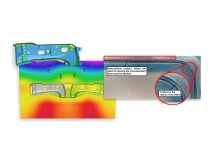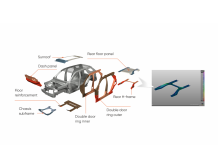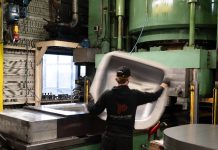An Overview of Tangible Results Achieved
using AutoForm Solutions
[dropcap]A[/dropcap]n AutoForm customer in Brazil, TRDI-MICX has been very successful in driving their company forwards thanks to simulation. In this article we reveal some of the tangible improvements they have made using AutoForm’s solutions:
Founded in 1995 in Brazil, the purpose of TRDI-MICX is to provide product and mechanical designs for tooling and industrial equipment to their region in the south of the country.
MICX-TRDI is approved by several major companies for the manufacture of progressive, tandem and transfer tooling, of medium and large sizes.
With a progressive outlook, they have always embraced new technologies. In 2000 they started design in 3D software and that same year they participated in the stamping congress to evaluate the applicability of virtual stamping simulations. In following years they carried out simulation experiments with universities and indeed observed an evolution in terms of the results being achieved both in ease of use and in accuracy.
Even so, the conformation definition in most of the tool designs was performed through volumetric calculations, which considered the reduced area of the section in relation to the possible stretching of the sheet. Here; the calculation of the binder’s pressure incorporates the friction of the blank area on the binder itself, relative to the tensile force and/or any compression of the sheet during the forming process. (A mathematical approximation taking a different approach than finite element analysis was used to estimate the stretching of the sheet. This was then finalized by an empiric method during final tryout.)

The springback of the flanges was defined by already obsolete tables, as available in the literature, since they were developed with materials different from those currently used. The cut line was developed by calculating the neutral line, but in parts where in addition to simple flanging there was also some conformation of surfaces, due to the method limitations the error margin was very large.
The compensation of the surface springback and cutting lines were not implemented in the project. In place of that some adjustment resources were leaved to minimize the rework during the tryout because these and other situations were not possible to predict reliably. Consequently, the first tryout was reached with several questions still to be settled. This, in addition of increasing the tooling costs compromised the deadline, since an adjustments were not always possible within the defined timeframe.

In 2011, TRDI-MICX started to use PAM-Stamp, its first software for stamping simulation, and began to use this resource extensively in its tooling manufacturing process, initially focusing on the wrinkles and split problems, and later to evaluate other issues within the product, such as wall stretching and visual aspects, among others. And as their knowledge about this technology advanced, the company began to use it to define offsets in cut lines, springback of flanges and ultimately to compensate the entire tool surface for the springback.
Then, in 2015 TRDI-MICX decided to replace the simulation system used with the one provided by AutoForm. The decisive factors for this change were the increase in development speed and the fact that exchanging files with their customers was made much easier.
‘AutoForm supports us in dealing with technical divergences between the simulated result and the built tool, seeking to further increase the accuracy of technology’ says Augusto Sandi and Cláudia B. Sandi, owners and general managers of the company.

Currently 100% of the tools designed by TRDI-MICX are simulated. According to their results, they have seen improvements such as:
– Reduction of time in the design of the tool.
– Reduction of the adjustment time, since the tooling already arrives at first tryout with a highly accurate dimensional level.
– Reduction of cost with components, since the definition of the loads during the simulation is more precise.
– Reduction of the amount of raw material used and manufacturing hours, as it minimizes the need to leave post-tryout fit points.
– Consolidation of simulations as a methodology to solve problems in the company itself
– The technology reduces the unpredictability of the process and has a quick learning curve.
Today the use of software for stamping simulation in the development of mechanical designs is an integral part of the TRDI-MICX operations.
Currently the company operates in an area of 3000m², and provides approximately 150,000 man-hours of tooling per year, working specifically in tooling for the automotive sector.

Article from Augusto Sandi e Cláudia B. Sandi













